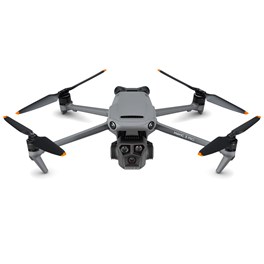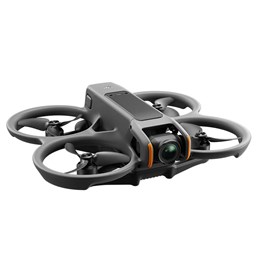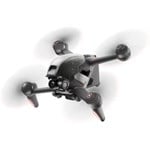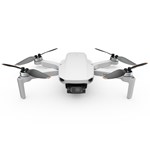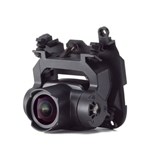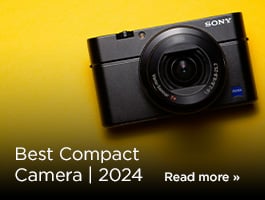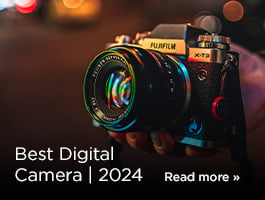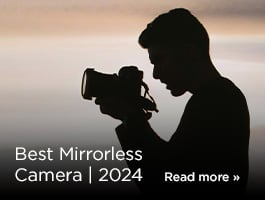
The best drones allow you to capture stunning aerial imagery for a relatively low cost. It used to be that when movies and TV shows needed aerial shots, the crew had no choice but to pile into a helicopter. That’s all changed now thanks to the advent of 4K-capable consumer drones, which mean that anybody at all can produce spectacular images from the skies.
And we do mean anybody, as some of the best drones are highly affordable. While there are incredibly expensive professional drones that are used on Hollywood productions, there are also much more affordable options that still capture great images. And they’re not just cheap knock-offs — every drone in this guide comes from the market leader, DJI.
These are the drones that have most impressed our technical team with their design, value, image quality and balance of features. You can watch our in-depth YouTube reviews for more on some of these drones, which we’ve included throughout the guide. You can also look at our pre-flight checklist that includes things you must consider before lift-off.
For more gear designed for more extreme shooters, check out our guide to the best action cameras — otherwise, let’s get into the best camera drones to buy in 2025.
Best drone overall:
|
Camera: Triple-camera system (20MP 4/3 Hasselblad, 70mm 48MP, 166mm 12MP) Video: Up to 5.1K at 50fps Flight Time: Up to 43 minutes Obstacle Avoidance: Omnidirectional sensors Range: Up to 15km (O3+) |
Pros:
Cons:
|
This DJI drone offers simply breathtaking camera quality, and we reckon it’s the best buy for most users.The DJI Mavic 3 Pro is the first drone to be built around three lens modules, giving you a huge degree of versatility when composing your shots. There’s the standard 4/3 Hasselblad 20MP camera module, which sports a 24mm equivalent lens. Then there’s also the 70mm equivalent tele module that can shoot at up to 48MP, and a 166mm equivalent module that manages a still-respectable 12MP.
Video-wise, it’s an absolute beast. Headline features include 5.1K resolution at up to 50fps, 4K at up to 120fps, and Full HD 1080p at a super-slow 200fps. The Mavic 3 Pro also offers the 10-bit D-Log colour profile, allowing it to capture up to a billion colours, and ensuring the optimal level of grading flexibility when it comes to post-production.
With sophisticated flight safety features like Omnidirectional Obstacle Sensing, the DJI Mavis 3 Pro is a filmmaking tool you can rely on.
Best budget drone:
|
Camera: 1/1.3-inch CMOS, 48MP stills Video: 4K at 40fps Flight Time: Up to 45 minutes Stabilisation: Single-axis mechanical gimbal Weight: 135g |
Pros:
Cons:
|
This is the drone for just about anyone. The DJI Neo is designed and priced to appeal to users who may have never flown a drone before, who may be just dipping their toe into the world of aerial image-making. At 135g, it’s amazingly light, and it can be controlled via a smartphone and the Wi-Fi connection — though you can purchase a separate remote controller to extend the operating range.
Capable of capturing 4K video at up to 30p, the DJI Neo may not offer the sophisticated codecs and shooting modes of the more advanced drones, but it certainly gets the job done. Plus, you do get some of DJI’s sophisticated subject-tracking functions, which use the power of AI to help the drone keep you in the centre of the frame. If you’re cycling or hiking, you can instruct it to automatically create dynamic follow-shots, while the single axis mechanical gimbal keeps things smooth and stable. Photographers aren’t left out either, with the ability to capture 12MP stills.
One really nice touch on the DJI Neo is the inclusion of 22GB built-in storage, meaning you don’t need to factor in the cost of a memory card and can simply start flying and shooting the second you open the box. The best ever drone for beginners? It just might be.
Best small drone:
|
Camera: 1/1.3-inch CMOS, 48MP stills Video: 4K at 100fps Flight Time: Up to 45 minutes Obstacle Avoidance: Omnidirectional sensors Weight: 249g |
Pros:
Cons:
|
It used to be the case that if you wanted a drone underneath the 250g mark, which affects the rules governing where and how you’re allowed to fly it, you’d have to accept some pretty serious compromises in terms of image quality. But that isn’t the case anymore — the DJI Mini 4 Pro is a drone with “249g” proudly printed on its chassis, but it still offers an impressive suite of imaging features.
With its 1/1.3-inch sensor, the Mini 4 Pro can capture great-looking 4K 60p HDR footage, as well as stills at 48MP or a more manageable 12MP if file size is a greater concern than resolution. If you want to get more granular with your video capture, there’s the option to shoot in D-Log to maximise dynamic range, or at 100fps for super-slow-motion effects. The Mini 4 Pro has all of DJI’s sophisticated flight features, including obstacle avoidance that works via a series of wide-angle and downward sensors, and its subject-tracking abilities are hugely impressive, allowing you to set it to automatically follow your chosen subjects.
Boasting top-end image quality in a tiny, tiny body, the DJI Mini 4 Pro is one of the most sophisticated portable drones ever made. An ideal choice for travel, or just for anyone whose kit bag is often bursting at the seams.
Best FPV drone:
|
Camera: 1/1.3-inch CMOS, 155° FOV Video: 4K HDR ultra-wide Flight Time: Up to 23 minutes Obstacle Avoidance: Downward/backward sensors Range: Up to 13km (O4) |
Pros:
Cons:
|
What if you wanted to truly immerse yourself in the act of flying a drone. The DJI Avata 2 is designed for just that — coming bundled with a set of DJI Goggles, it’s an FPV drone, which stands for “first-person video”. The Goggles give you an immersive, real-time view of what the drone is seeing via its crystal-clear OLED screens, meaning you can fly with much more control and precision. This also means that the DJI Avata 2 holds your hand a lot less than other drones — it lacks the obstacle-avoidance systems and other stabilising helpers that DJI has added to the rest of its lineup. For this reason, it may well not be the drone for you, as Stephen observed in our video review (see below).
The DJI Avata 2 can take stills, but it’s designed more for exploration and video — so if you’re primarily a photographer, one of the other drones on our list will be a better choice. Video-wise it certainly does the business, with the ability to capture 4K HDR footage at up to 60fps, and the option to shoot using the D-Log colour profile to maximise dynamic range for the colour grade. Having a greater degree of control over your slight also means you can get much more dynamic swooping shots than you might get otherwise — it’s a great one for introducing real drama into your footage.
This is a harder drone to master than many others on our list. But if you’ve got the time and patience, it’s an experience like no other.
Best professional drone:
DJI Inspire 3 Combo
Take the skies by storm with the DJI Inspire 3 Combo, a powerful full-frame 8K quadcopter with interchangeable lenses for high-end photography and cinematography. Designed from the ground up with improved aerodynamics in mind, the Inspire 3 is faster and flies for longer. Combined with centimetre-level RTK positioning and smart flying functionality, the DJI Inspire 3 is the peak of aerial imaging.
£13,419.00 View
|
Camera: Full-frame X9-8K Air gimbal Video: Up to 8K at 75fps Flight Time: Up to 28 minutes Obstacle Avoidance: Full sensor coverage Live Feed: 1080p/60FPS for 15KM in single control mode 12KM in dual control |
Pros:
Cons:
|
For the ultimate in pro aerial filmmaking right now, look no further. The DJI Inspire 3 is an absolute beast — bearing the DJI Zenmuse full-frame gimbal camera, it’s capable of capturing images with incredible detail, with more than 14 stops of dynamic range. At its full 8K resolution, you can shoot at up to 75fps, and the camera supports both ProRes RAW and CinemaDNG (the latter up to 25fps in 8K). With the DL lens mount, you can also take advantage of DJI’s range of monocoque carbon fibre lenses.
Of course, DJI hasn’t shirked its duties in making this drone fly like a dream. It’s equipped with nine sensors, and has a RTK (real-time kinematic) positioning system that works with GPS to ensure pin-point precision. The flight time is 28 minutes, and the O3 Pro Video Transmission System enables long-range control, with a maximum transmission range of up to 15km.

How to choose the best drone
There are a few key features to consider when shopping for a camera drone:.
Weight - This is hugely important for a drone, naturally, as it’s going to be spending its time in the air. However, there’s a legal component too, as the rules you have to follow when flying are different depending on whether a drone weighs more or less than 250g (this is why you see a lot of drones weighing around the 249g mark). You can check out the full Civil Aviation Authority drone guidelines here.
Other than the legalities, there are reasons to consider the weight of the drone you buy. Lighter ones are more portable and easier to carry, while heavier ones tend to be more stable and able to withstand high winds.
Sensor size - Just as with regular cameras, the size of a sensor in a drone’s camera affects the quality and in particular the dynamic range of the images it produces. Cheaper, smaller drones tend to use sensors around the 1/1.3-inch or 1/2.3-inch mark. As you slide up the scale, you start to see larger 1-inch sensors, and top-end drones for broadcast like the DJI Inspire series sport full-frame chips.
Automatic flight features - As drones are getting more sophisticated, many are acquiring features designed to take a bit of the work out of flying — and protect themselves from harm. Many modern drones have automatic obstacle avoidance sensors that mean they can prevent themselves from slamming into trees, lampposts and so forth. Automatic “Return to Home” functionality when battery life gets low is also common, preventing the drone from getting lost. Some drones can also track and follow subjects, and automatically execute complex flight manoeuvres around them.
Drone Training with Eagle Eye Innovations Ltd
By purchasing a new drone from Wex Photo Video, you automatically qualify for a 15% discount on any training course. To find out more about the courses on offer, visit Drone Training. To claim your discount, please email your proof of purchase to info@eeinnovationsltd.com Find out more »
FAQs
What should I consider before buying a drone?
Before buying a drone, it’s best to consider your purpose, budget, skill level and the regulations in your area. Do you want to take aerial photography or shoot video? Researching the laws and regulations in your area regarding drone usage is important because there are some locations where it is illegal to fly a drone.
What types of drones are available?
There are various types of drones available, including camera drones, racing drones, toy drones, and professional drones. Here at Wex, we specialise in camera drones for aerial photography and videography.
What features should I look for in a drone?
Consider the flight time (battery life), camera quality, range, stability, GPS capabilities and the ability to perform specific manoeuvres. It’s worth also considering the controller type (dedicated remote or smartphone app) and the drone's compatibility with your smartphone or tablet.
Do I need any permits or licenses to fly a drone?
The regulations regarding permits and licenses for drone flying vary by country and even by region. In many places, recreational drone flying does not require specific permits or licenses, but commercial use may require certification or registration. It's important to research and adhere to the local regulations in your area.
What are the safety guidelines for flying drones?
Safe flight guidelines include but are not limited to always flying your drone within line of sight, and avoiding flying near airports or restricted airspace. Respect the privacy of others, fly in appropriate weather conditions, and maintain a safe distance from people, buildings, and vehicles.
How do we decide?
Our in-house photography experts, store staff and partners all work collaboratively to pour over our guides and tips articles. We also consider emerging trends and customer feedback to make sure our guides are always up-to-date and reflective of what people are truly looking for. By curating only the best products, our guides provide trustworthy recommendations, making it easier for customers to make informed choices with confidence.
If you would like more advice on any purchase our contact centre staff are here to help. Alternatively, you can reach us via email or social media. And don't forget. If you were to purchase anything based on our recommendations you'll be covered by our full returns policy
